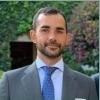Explore all the information on
Poultry welfare
Proper animal welfare involves providing the proper housing, management, nutrition, disease prevention and treatment, responsible care, humane handling and, when necessary, humane euthanasia. These factors allow for the most optimal and humane growing environment. The concept of animal welfare includes three elements: the bird’s normal biological functioning, its emotional state and its ability to express its natural behaviors. Improving animal welfare can be accomplished through offerings like poultry feed enrichment, which can reduce stress, thereby increasing performance, productivity and profitability. Animal welfare is currently a major requirement for intensive poultry production. Beak trimming, stocking density, free access to feed, heat stress, and air pollutants became important issues, which are regulated in several countries. Animal welfare is observed by watching how birds naturally behave and even by looking at mortality stemming from aggressive behaviors.
Layer battery chicken cage system is a popular poultry farming equipment used for raising laying hens. This system is designed to provide a comfortable and efficient environment for the hens to lay eggs. There are two main types of layer cage systems used in poultry farming: A-type and H-type. Each system has its own unique features and benefits, and choosing the right one depends on various factors such as the size of the farm, the breed of the hens, and the specific requirements of the...
Comments : 0
Recommendations: 0
Smothering is a form of mortality which results from groups of hens pressing together in such a way that some hens are killed presumably due to suffocation. A recent Australian epidemiological study reported that smothering accounted for 11% of mortality across 3 separate organisations and in two separate climate zones in Australia (Hemsworth et al., 2022). Previous surveys of producers in the UK reported a positive correlation between range use on a sunny day and smothering and suggested...
Comments : 0
Recommendations: 0


Sustainability and profitability in animal production: a necessary and possible balance
Suggested link
I. INTRODUCTION With the recent COVID-19 pandemic disrupting the regular supply chain in agriculture and threatening food security, it is imperative to look for innovative ideas to meet the population's food demand (FAO, 2021). The agriculture sector is pressured to offer sustainable, economical, and ethically-produced animal protein. Egg, a cheap and relatively easy-to-produce commodity, is one of the best candidates for such protein. Thus, there is a surging increase in layer...
Comments : 0
Recommendations: 0
The greater intensification of animal production cannot neglect the welfare and the correct conditions of animal housing and management. The European Union (EU) has established a wide range of legislative provisions that guarantee this condition and more and...
Comments : 4
Recommendations: 4
Prafulla Regmi (University of Georgia) shares his research on the interaction and movement of birds in a cage-free aviary system and explains how this technology could be implemented, in this Engormix interview during IPPE 2024 in Atlanta, USA....
Comments : 0
Recommendations: 2
Tom Tabler (University of Tennessee) explains how sprinklers work and their impact on feed conversion, weight gain, and bird performance, in this Engormix interview during IPPE 2024 in Atlanta, USA....
Comments : 0
Recommendations: 2


Prices Hold, Pressures Build: What’s Moving the Veterinary API Market
Suggested link
Mike Czarick (University of Georgia) shares insights and test results on the benefits of uniform floor heating, in this Engormix interview during IPPE 2024 in Atlanta, USA....
Comments : 0
Recommendations: 1
Mike Czarick (University of Georgia) explains how important it is to have the right combination of static pressure and inlet opening, as well as considering outside temperature, in this Engormix interview during IPPE 2024 in Atlanta, USA....
Comments : 0
Recommendations: 1
Dr. Fernanda Castro, Technical Service Manager and Global Sustainability Coordination inoSust® Program at Evonik Animal Nutrition, points out how inoSust® collects and analyzes data to identify the environmental footprint of poultry production
...
Comments : 0
Recommendations: 3
I. INTRODUCTION Determination of range usage by hens can be difficult for researchers and free-range egg farmers, particularly usage on the outer sections of the range (i.e., > 50 m from the hen shed). Live counts only give a snapshot of numbers of hens on the range at a defined time point and do not show the frequency of range usage. Camera traps, also referred to as trail cameras and wildlife cameras, are relatively cheap and useful tools that could produce valuable information...
Comments : 0
Recommendations: 0
I. INTRODUCTION The welfare of all farmed livestock is of importance to the consuming public. Australian consumers especially have some concerns about welfare within more intensive animal production systems, such as commercial egg farms (Rachel et al., 2017). Most consider cage-free and free-range production systems to be more `natural` and associate this with `good` animal welfare (Buddle et al., 2021). Commercial egg farms experiencing smothering and mortality events as a result of...
Comments : 0
Recommendations: 0
Quantification of range use in commercial meat chicken flocks is desirable so that farmers can objectively assess meaningful range access, including number of chickens using the range and how far chickens roam from the shed. Currently there is no cost-effective technology for quantifying range use in commercial conditions, and farm staff perform assessments based on visual inspection. A proof-of-concept machine vision system was developed for automated range use assessment, using simple and...
Comments : 0
Recommendations: 0
I. BACKGROUND The scale of the Australian chicken-meat industry has increased at an extraordinarily rapid rate so that now chicken-meat is clearly the first preference of consumers in comparison to pork, beef and lamb. In 1990/91, the Australian population was 17.2 million with a per capita chicken-meat consumption of 23.9 kg; however, this increased by 61.0% to 27.7 million people and consumption increased by 100% to 47.8 kg over the 30 years to 2020/21. As a direct consequence, the...
Comments : 0
Recommendations: 0
The International Production & Processing Expo (IPPE) offers attendees access to the latest in protein and feed technology through exhibits and educational programing. TECHTalks are free, 20-minute technical presentations, offered each day at IPPE. For the 2024 IPPE, 97 presentations will be given in the TECHTalks theaters in the A-Hall at Booth A244, in the B-Hall at Booth B48027 and in the C-Hall at Booth C14185.
The TECHTalks presentations will address many topics, including...
Comments : 0
Recommendations: 0


Evaluation of methionine sources on performance and carcass traits of broilers at different dietary sulfur amino acid levels under northern European and middle Eastern conditions
Suggested link
INTRODUCTION It is essential to maximize poultry production to meet the increasing demand for animal protein due to the increase in global human population (Tona, 2018). One of the major determinants of successful poultry production is the ability to combat environmental stress challenges in broiler chickens. Stress occurs as a result of a biological response to an internal or external stimulus that poses threats to the normal physiological equilibrium of an organism (Elitok,...
Comments : 0
Recommendations: 1
I. Introduction Early life experiences play an important role in the behavioural development of laying hens (Janczak and Riber 2015; Nicol 2015). Environmental differences in rearing systems have been shown to have an impact on behavioural problems such as feather pecking and cannibalism during adulthood (de Haas et al. 2014; Riber and Guzman 2017). In addition, fearfulness early in life has been shown to correspond to increased stress response in adulthood (de Haas et al. 2012). A...
Comments : 0
Recommendations: 0
I. Introduction In Australia, 95% of the population are concerned about animal welfare with 91% desiring better ways to monitor and improve animal welfare (National pest & disease outbreaks, 2018). There is increased understanding and focus on animals’ sentience and the need to ensure farm animals have ‘lives worth living’. This applies to the Australian egg industry where research shows the community believes that hens are entitled to positive and rewarding...
Comments : 0
Recommendations: 0
Press release - After the successful product launch in France in January, site expansion of a satisfied customer, and more than 23 million eggs scanned; a new installation with three modules of the Genus Focus in-ovo sexing is installed at LOHMANN Deutschland Hatchery,...
Comments : 0
Recommendations: 0


Sustainability and profitability in animal production: a necessary and possible balance
Suggested link
A fast-growing broiler produces a surprising amount of heat, roughly 10 - 15 Btu/hr per pound of body weight. To put this in perspective, a single match produces one Btu/hr of heat which means that a four-pound broiler has essentially 40 to 60 matches of heat being produced within it. An eight-pound broiler would have 80 to 120 matches of heat within it, heat it must continually rid itself of in order to maintain a normal body temperature. As a bird’s body temperature increases,...
Comments : 0
Recommendations: 1
Managing by the “average” of anything can be a potentially dangerous concept when it comes to growing birds. For instance, when tunnel ventilating market-age broilers the average house temperature could be 80°F, which isn’t necessarily a problem, but it hides the fact that it could be 70°F at the pad end and 90°F at the fan end of the house which definitely would be dangerous. During cold weather, an average daily relative humidity of 60% seems ideal, but in...
Comments : 0
Recommendations: 1











.jpg&w=3840&q=75)












